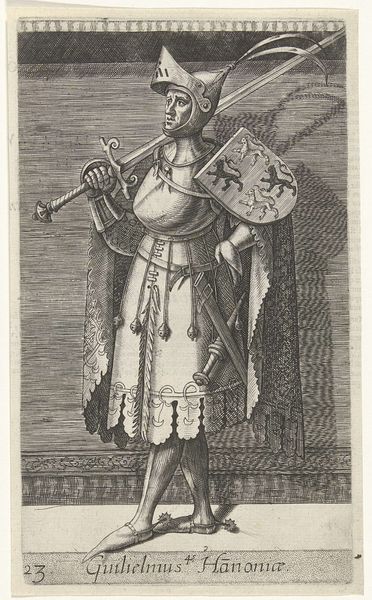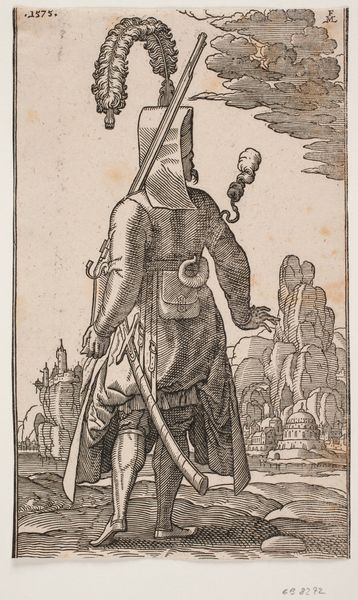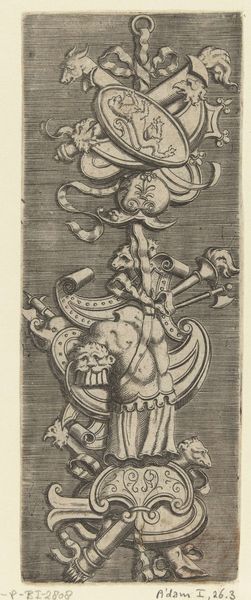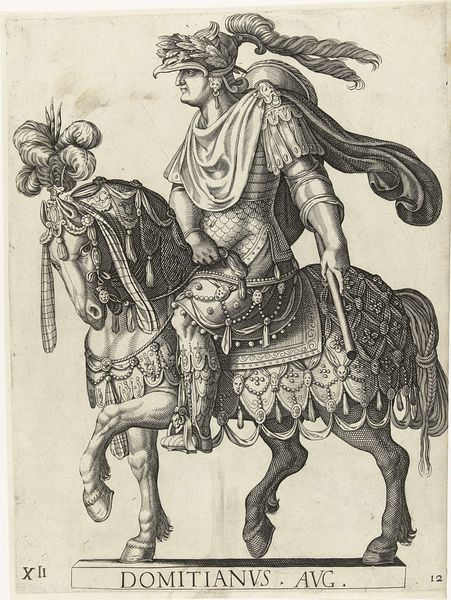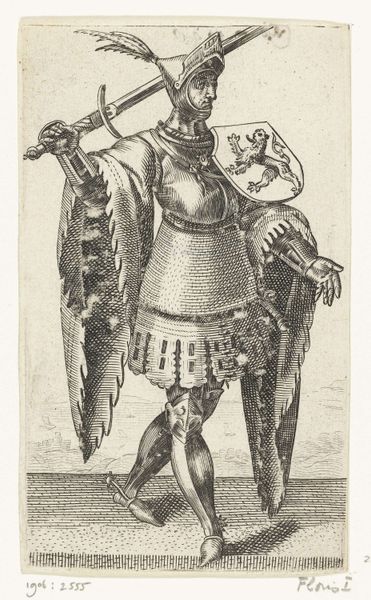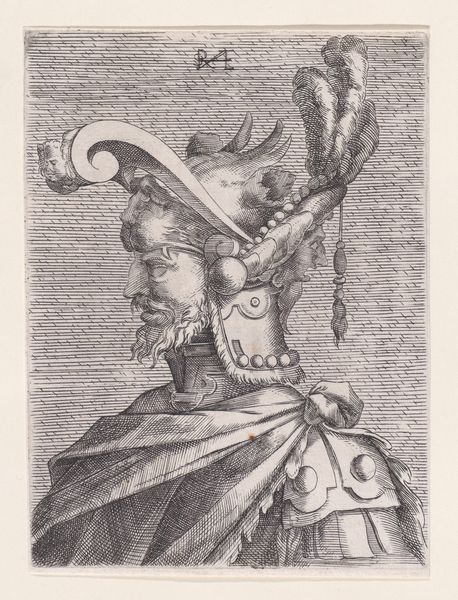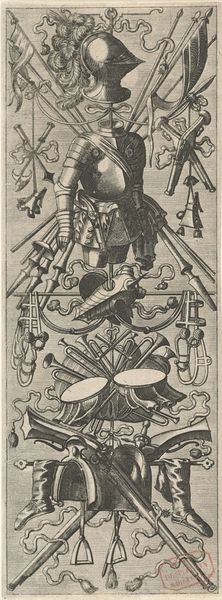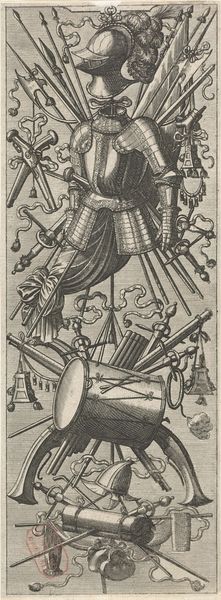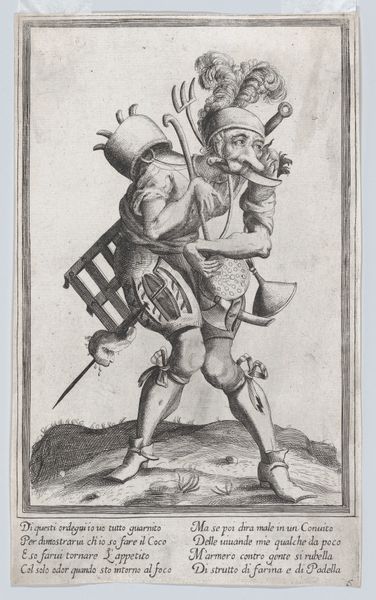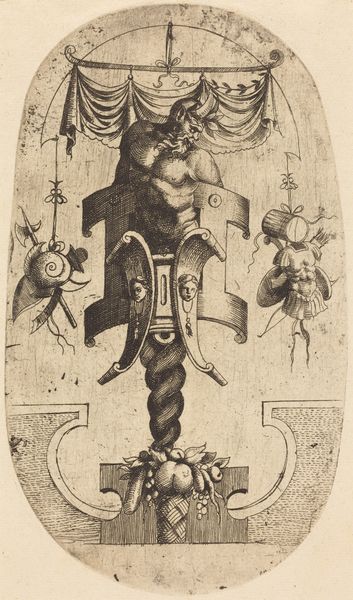
Helmets, dagger, quivers, poker, signs (from the pedestal of the Column of Trajan)
0:00
0:00
drawing, print, etching, engraving
#
drawing
# print
#
etching
#
romanesque
#
ancient-mediterranean
#
pen-ink sketch
#
arch
#
history-painting
#
academic-art
#
engraving
Copyright: Public domain
Editor: Here we have Giovanni Battista Piranesi’s etching, "Helmets, dagger, quivers, poker, signs (from the pedestal of the Column of Trajan)." It depicts an array of Roman military equipment with striking detail. What jumps out to me is the level of ornate decoration on objects clearly designed for war. How do you interpret this contrast? Curator: As a materialist, I'm immediately drawn to the process by which Piranesi created this image. Etching and engraving allowed for the widespread distribution of knowledge. Look at these precisely rendered depictions of military artifacts. Who had access to them, and what statement was Piranesi making by circulating these images? Were they meant to inspire, intimidate, or perhaps document a vanishing martial tradition? Editor: That's fascinating! I hadn’t considered the printmaking process as part of the artistic statement itself, only as a means of reproduction. Do you think he was also interested in elevating the status of these functional objects to something worthy of artistic consideration? Curator: Exactly! Consider the materials: iron, steel, maybe leather and bone for the hilts and decorations of these weapons. These were not luxury goods, initially. Piranesi transforms them through his art, prompting questions about the value we place on labor, the role of craft within industry, and how societal structures impact artistic expression. We tend to separate "art" and "craft", don't we? Editor: We do, and often without thinking. So, by showcasing the artistry inherent in everyday objects, Piranesi challenges those divisions? Curator: Precisely. By foregrounding these weapons—tools of Roman military power—he prompts a critical look at the materials, labor, and social structures that sustained the Roman Empire and continue to influence the ways we define and value art. What do you think of this view? Editor: This gives me a completely new perspective! I had seen this as purely historical documentation, but now I recognize how it also comments on social structures. Curator: Indeed, reflecting on Piranesi’s printmaking and these artifacts of production forces us to consider these connections between labor, materials, and society.
Comments
No comments
Be the first to comment and join the conversation on the ultimate creative platform.
